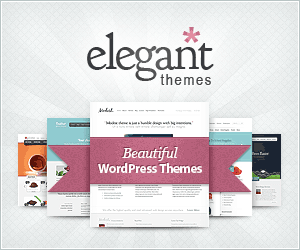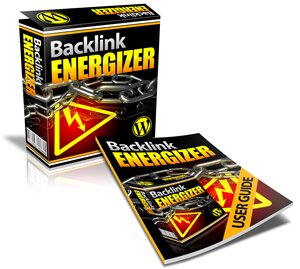I write from the heart. I write with pride. I write with dignity.

I might sound arrogant. I might sound harsh. I might sound raw, uncut. I’m just genuine: I tell it as it is. “Fake it till you make it” is not really a phrase in my vocabulary. Authentic writing, yes! It is what I do, what I teach, what I share, with you and with the world.
I do NOT try to attract each and everybody to my content. I never try to please everyone. I know who my target audience is: I know who I talk to. I know who I communicate with.
How come? What is the secret? In depth research; I have developed a simple yet powerful, unique formula that I use each and every time (before) I write something, be it a short email, article or blog post.
You might find this shocking, but it’s the naked truth: I spend minimum 3 hours before I jot down the first phrase or idea. I follow this formula…
In depth DETECTIVE analysis (aka RESEARCH) – this is what 97% of aspiring (copy) writing gurus and bloggers neglect. Even the gurus (aka veterans) are fault to this error. It seems like they don’t really have the time to look for what others have to say, they think they know it all.
No time to see what your competitors are writing about? No time to see what their visitors think (and comment about)? That’s insane. Suicide! Relationship-sinking, profit-slashing habits you have to get rid of, at all costs.
If you want to receive only 10% of the potential of whatever you aim to achieve (e.g. visitors, leads, downloads, sales, partners, referrals, and so on) then do NOT run in depth RESEARCH.
But when you run the kind of RESEARCH I’m about to share with you next, you’re opening the gates to unlimited wealth. Call it: profit potential unlocking. I’m not talking about money, but the potential in whatever you put in (time, effort, energy, resources, skills, etc)

You see, the VAST majority of writers, marketers and bloggers I hear about (and study) – and I encounter hundreds on a weekly basis as per my research approach – actually make hundreds of excuses that block them to spend quality time in researching.
Let me ask you something now: what do you think is the chance to write a high-quality article if you’re only spending 10 minutes (or less) on researching your topic, target audience needs and competitors’ content? Slim to none!
I learned this through deep daily practice:
You cannot connect with your audience without proper, quality research. You cannot make your point across and generate sales unless you know what you’re talking about and connect your audience’s needs with your solution’s benefits (and advantages)
It’s a fine mix you have to compose, it requires R –E – S – E –A – R – C – H
Before we dig into the juicy stuff, let me quickly share two key elements:
#1 – Regardless of how many books you’ve read or how many seminars you attended, your mind is able to expand and receive: new information, new knowledge and new ways of doing something — better, more effectively and efficiently.
#2 – Regardless of the quality and the quantity of the information you absorbed so far, spending even 15 quick minutes on in dept research is going to put that to shame and provide you with priceless knowledge.
In 15 minutes I’m able to find the latest trends, the hottest topics my target audience wants to learn more about, and more importantly – the key terms they’re typing in the searching engine and the stuff my competitors have already written about.
But that’s not enough! NOT ENOUGH. Do you hear me?
What kind of in depth research I do (and why I spend 3 hours before I start writing)
Run Google searches using their free external tool
https://adwords.google.com/select/KeywordToolExternal
You probably already know the power of this resource. The key aspect I want you to understand: there’s no need to pay for something extra if the free available tools accomplish your needs, right?
I see marketers (newbies and veterans alike) rage all the time about the latest SEO tricks and software programs. I keep things simple and use the minimum to achieve my goals and keep costs down, while knowing where to spend the most time, effort and money to reap max. gains.
I advocate for (smart) investing in your online business; you need to know where to spend your money, and WHEN – this is the best lesson you have to learn. And only practice will teach you the fine art of business balance and marketing optimization.
Extract problem-oriented long-tail keywords from Google’s searching tool
The best articles I write ignite from problem-focused key phrases like for example, if I’m writing on blogging topics, I do not write from the top of my head, without searching first the current problems my audience struggles with.
Whenever you type in a lengthy key term or one word in your research tool, make sure you type in (or consider) any of these problem-exposing words:
- PROBLEM
- CHALLENGE
- NEED
- WANT
- ISSUE
- WORRY
- QUESTION
Inside this post, you’ll find 216 problem-oriented key terms you could search for (free PDF download offered by friend and blogger – Steve Scott)
I always start my writing from a problem, issue or challenge. Why? Because people (my visitors and your readers) are always going to be facing obstacles and are always going to looking for new solutions. Yes, even on the same topics that you see everybody talk about!
Just think about it: you do not spend hours on web sites, forums and blogs of interest just because you like to entertain yourself for the fun sake. You’re looking for (specific) solutions to your wants and needs. Maybe you’re bored at your current job and want distractions (I tell this in a positive way) – you’re looking for alternatives: how to do what you already know for better payouts, or how to develop new skills and get paid what you’re really worth – this is the spark that gets people start online and give up their JOBS…
And if you think about it, this is what turns unknown people into pro bloggers, super star affiliate marketers and best-seller authors: the frustration that comes from their current live events and situations.
That is why you should ALWAYS start your (content) RESEARCH with the problem-solution aspect in mind and your readers will feel like you’re writing from the heart, like you’re speaking to them as you know each others from back in the Elementary.
Marketers know that … “people prefer to buy from other people that they like, know and trust over complete strangers” and we both know how true that is! Let me say that people will listen to you (before they buy) ONLY if you connect to their needs through your content.
Your content talks to them, or not… and in depth research is what makes your content “WOW”!
Study competitors
My competitors are not just bloggers who talk (or focalize) ON the topic or problem I want to write about. My competitors are:
- BOOK AUTHORS
- SPEAKERS, TRAINERS AND COACHES
- SUPER AFFILIATES AND INTERNET MARKETING GURUS
- INSIDER EXPERTS AND SPECIALISTS
Neglect this step and you’re reducing your research power down to 50% and cut your writing quality (and its output) tremendously.
Writing is output. You cannot produce awesome, believable content, unless your input (RESEARCH) is awesome and comes from believable sources, correct?
That is why my formula is different than the rest, and it “only” requires I invest at least 3 hours of in depth research – before I write a single phrase! And here’s what I do…
I inspect industry-related blogs, sites, and forums.
I study competitors on Quantcast.com. I am not content just with sites as Google, YouTube, Twiter. I dive into the web, as well as in the offline world. 3 hours, at least!
You have to understand that writing is not writing in itself; writing generates from RESEARCH.
What you read about, what you hear and what you see. This is what produces your writing. Not your actual knowledge. That’s why almost anybody can turn into a little “expert” on a topic if they take 3 or more hours to study a topic in depth. And sacrifice TV or clubs.
And take this: the ideas (and problems) that you write about are more important than the actual data-typing or information-organizing. 80% is research, and 20% is actual “writing”.
This is where most bloggers and writers fail. They write about the wrong topic or “problem”. They assume they know what their audience know, and write about it. That’s like walking backwards.
Start with RESEARCH. This entire article is about my formula. And I don’t even have enough time to exhaust this KEY topic (in depth research).
Sometimes I interview experts (and I created a ton of info-products using this method) not only because I get to learn from the best in their fields, but because I can save a ton of time, effort and money, simply by getting expert-insights and asking them the right questions.
You see, it is NOT enough to gather 10 specialists and interview them. Call that an ebook and sell it for $47. You have to know to ask the right questions in a politely manner (whether by email, skype or phone) – and asking the right questions TAKES in depth research.
I’d say and go to the extremes that NOTHING online should be taken care of without proper RESEARCH. You cannot email someone you don’t know and ask them to promote your product or help you for free on a (laborious) project. There’s a specific way of doing these things, you have to learn.
And when you consult with (or have a mentor) someone who has already been through such aspects, you actually should be HAPPY to pay for his expertise and save yourself head aches, time and errors.
Imagine me going nuts about research, sometimes investing up to 15 hours a WEEK when having to write an in depth viral blog post, PDF report or other related content which requires facts and credible sources, not just information.
Editing
I do not edit my writing like a fly going crazy round circles. I do it once I finish at least 95% of the actual email, article or blog post.
When I do this, thoughts flow naturally and my fingers type faster than my mind thinks. Whenever I transfer my mind from the “writing” into the “editing” mood, I lose track, I lose inspiration. I hit the writers block. I don’t have problems starting the writing, as I have enough quality research material on my hands. My biggest challenge is to avoid editing (I rarely go back a phrase to correct or add to it, while writing!)
An important thing I want to mention: never strive to remove your editing habit. Law of attraction says that you get what you focus on. If you keep an eye on editing, you’ll never finish writing.
Permit yourself to edit. Sometimes you might find better ideas or angles to say the same thing with less or better words. Just keep editing at minimum, and usually at the end of your writing.
Arrange your content in a logical (guide-style) format
I won’t talk much about this. The majority of people would prefer step-by-step information over the so-common web non-intelligible and non-organized content. If you are the one putting your content in an easy to read format, you get to win the heart of your reader and provide him/her with a great reading experience.
You have to understand that information is not everything that people are looking for. They also want it to come in an easy-to-read, easy-to-digest format, like a blueprint. That’s why I can easily sell free information for $10, $50 and even $149 because people are willing to invest in the time you took to arrange stuff people want to read.
Why? Because they won’t have to do it themselves, either out of time or expertise, or both.
Reach to your competitors’ readers
Your competitors have already the target audience you want to reach and talk to. You want to get them talking about you and your product. You want them spreading the world about your brand, your service, your content, and everything you have to say online and offline. They’re your advocates, your raving fans, your 2.0 tribes.
Neglect your competitors’ content and whatever they’re saying (on their blogs, sites, forums, books, videos, audios, white papers, etc.) and you neglect your target audience and potential customer base.
My research phase includes reading comments on blogs, on forums and on consumer reviews sites such as Amazon , plus other industry-related outlets.
Sometimes I get problem-oriented long-tail keywords (pure gems) just by listening to the crowd. This information combined with Google’s search terms is power for your content writing and marketing.
I’ll tell you upfront: content writing is marketing and marketing is writing. If you want exposure (the more people see your name/content/link out there, the better!) you cannot afford to limit your time, effort and budget on writing.
You can advertise here and there and expect limited results. But when you write, your content is exposed on the web, and sometimes in print (if you know how to do it). In print content doesn’t last. Online, it is archived for many months and years, you know it!
I like to consider that advertising is only 20% of marketing, and produces limited, short-term results (clicks or sales). Content writing is 80% of marketing which produces the highest and best results of your investment (time and money).
If I had $10,000 in my Paypal to spend on marketing, at least 80% would go into content writing (emails, how-to reports, blog posts, PDFs, Videos, Audios, you name it.)
FACT: I now devote 100% of my time to writing, and connecting with the audience I want to reach, educate and inform through my content. I spend ZERO on advertising because writing is what generates repeat, long-term customers, not hit-and-miss promotions.
Connecting is KEY
During my research I make sure to jot down links and contact details (e.g. email, Twitter profile link, etc) of people whom I consider potential friends, “ideal” to give feedback on the stuff I write.
Most of the times, they’re competitors. I use Excel to SAVE this priceless data and save me time later when connecting with influencers to help spread the word about my content.
Someone who has already been exposed to your content is 10x times more inclined to say YES promoting you and your stuff. I know have a “bad” habit: to email links only to someone that knows me, or that we talked previously.
Hesitate to publish
I NEVER (should I repeat?) mean, NEVER… push the send button once I finish writing the content. I let it for at least 10 or 20 minutes to sit there. I go do something else. I let my subconscious mind feed new thoughts and ideas and when it does, I go back and edit the text: add, rewrite or remove some words or phrases.
The biggest mistake I see bloggers, writers and much everybody who creates content make: RUSH.
The way I started writing content or publish blog posts years ago, was idiot-style. I knew that was not the way to go about it!
You see, I was getting a “brilliant” idea from the top of my head (thinking that’s what others would want to read about, and I was so wrong – didn’t really spend time to research for keywords or run competitive analysis at all)…
I was writing for 10 or 15 minutes, and call that good content. The majority of wannabe writers (and skilled bloggers) know what I’m talking about. Then I’d push the SEND button and wait for email replies and raving comments.
Do you put a seed in the ground today and wait to spring into a tree the next morning? Unheard!
This is why I make sure to spend (at least!) 3 hours before I write a short e-mail, article or blog post. Whether it is for my projects, or for my clients’ projects, I follow the same formula.
Before you hire your next content marketing specialist, make sure you refer them to this article. They might learn something new which helps improve their research and writing.
Go out there and share this message with the people you know and trust.
* Skilled writers are not born, they’re made. In depth research, practice and perseverance are the 3 key ingredients anybody who wants to cook up “wow” content has to mix before they achieve “instant” results.


